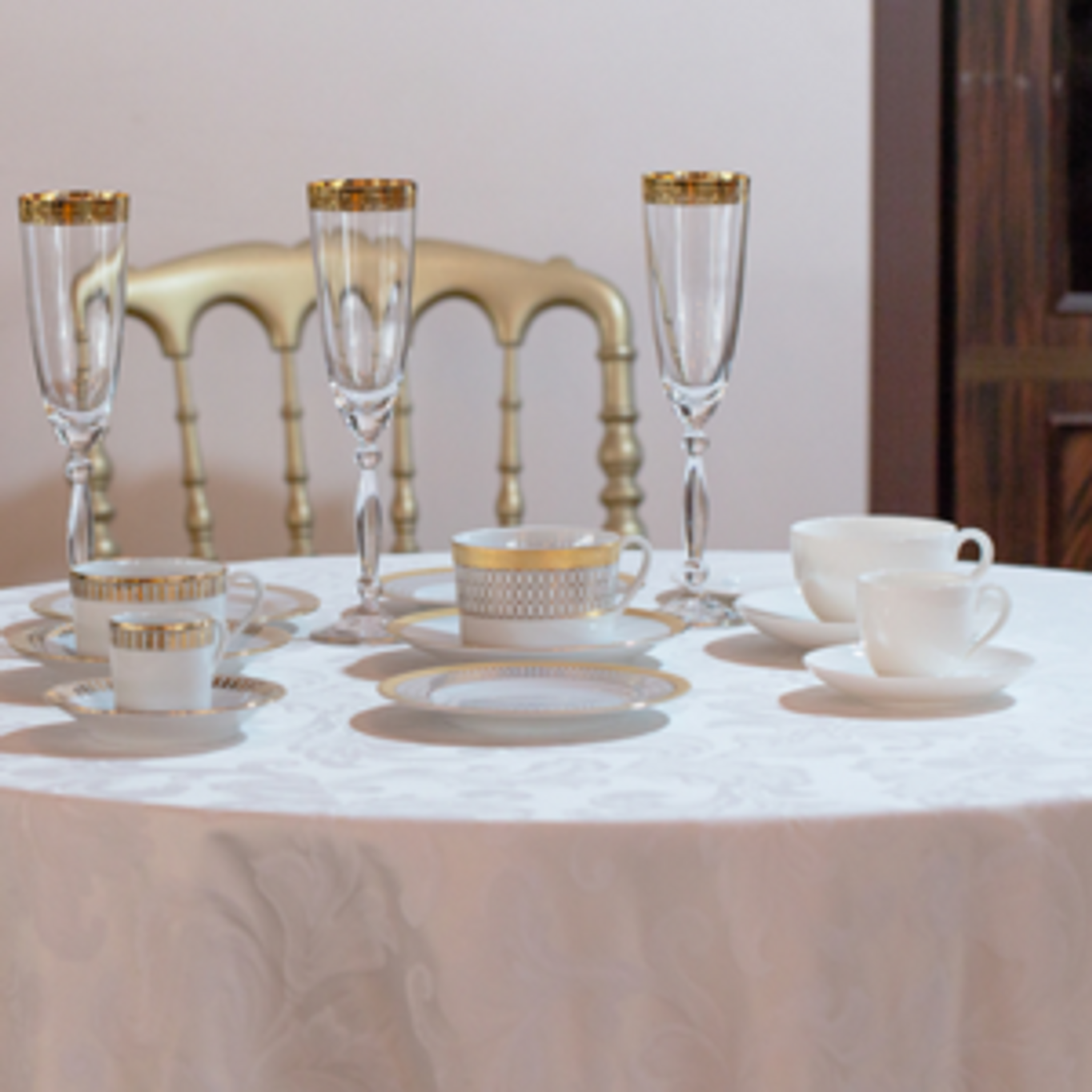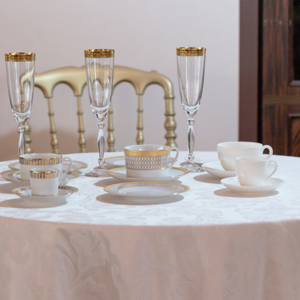
 Customised tablecloths are a simple way to change the look of a room without spending too much time or money. These easy projects make good home sewing sense.
Customised tablecloths are a simple way to change the look of a room without spending too much time or money. These easy projects make good home sewing sense.
Because most tablecloths are wider than one fabric width, you must seam fabric widths together to make the tablecloth the width you need. Avoid a center seam by using a full fabric width in the center and stitching narrower side panels to it.
Use selvage edges in the seams to eliminate seam finishing. If the selvage tends to pucker, clip it at regular intervals of 1" to 6" (2.5cm to 15cm). If selvages are not used in seams, finish with French or Over Edge Seams. Use plain seams for reversible table cloths.
Placemats, napkins and table runners give you an opportunity to experiment with finishing techniques you may be reluctant to try on larger projects.
Home-sewn tablecloths, unlike purchased ones, are not limited to a small selection of standard sizes. When you design a tablecloth yourself, you can scale it to the exact size and shape of your table. You can also choose from an abundant supply of fabric colours, patterns and textures that complement the decor of your room.
Selecting Fabrics
When you design tabletop fashions, look for durable, stain-resistant fabrics that have been treated to repel soil and water. Permanent press fabrics offer easy care. Drape the fabric over your arm to see how it hangs.
For everyday use, lightweight cotton is appropriate; use a lightweight tablecloth with a table pad to protect fine wood tables. For an elegant look, use sheer or lace or eyelet tablecloth over a heavier cloth.
Small random prints are easier to work with than prints that may need matching. Avoid heavily napped fabrics or fabrics with difficult to match design motifs such as printed plaids or stripes, diagonals or one-way patterns.
Measuring The Table
The length of the tablecloth from the edge of the table to the bottom of the cloth is called the drop. Be sure to include the drop length in your tablecloth measurements.
Round Tablecloth. Measure the diameter of the table, then determine the drop length of the cloth. The size of the table plus twice the drop length plus 1" (2.5cm) for a narrow hem allowance or 2 1/2" (6.5cm) for a wide hem allowance.
Square Tablecloth. Measure the width of the tabletop; then determine the drop length plus 1" (2.5cm) for a narrow hem allowance or 2 1/2" (6.5cm) for a wide hem allowance.
Rectangular Tablecloth. Measure the length and width of the tabletop, then determine the drop length of the cloth. Join fabric widths as necessary to make a rectangular cloth the length of the tabletop plus twice the drop length, and the width of the tabletop plus twice the drop length. Add 1" (2.5cm) for a narrow hem or 2 1/2" (6.5cm) for a wide hem.
Oval Tablecloth. Measure the length and width of the cloth. Join fabric widths as necessary to make a rectangular cloth the length of the tabletop plus twice the drop length; add 1" (2.5cm) to each dimension for a narrow hem in an oval tablecloth because it is the simplest way to finish the curved edge. Because oval tables vary in shape, mark the finished size with the fabric on the table. Place weights on the table to hold the fabric in place, then use a hem marker or cardboard gauge to mark the drop length evenly.
Three Common Drop Lenths:
Short: 10" to 12" (25.5 to 30.5cm)
Mid-length: 16" to 24" (40.5 to 61cm)
Floor-length: 28" to 29" (71 to 73.5cm)
Short cloths end at about chair seat height and are good for everyday use. Mid-length cloths are more formal. Elegant floor-length coverings are used for buffet and decorator tables.
